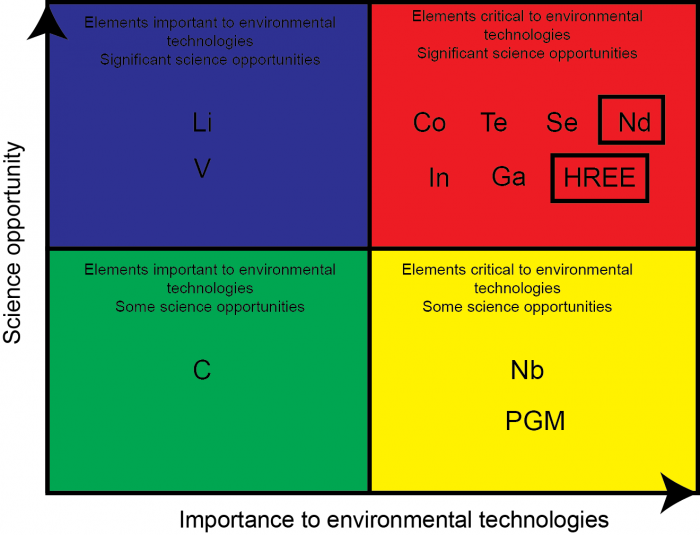
Nowadays, the industry is more and more demanding of many metals. Among these many metals are rare earth elements, and some of these elements (e.g., neodymium, Nd) are used in particular to produce powerful permanent magnets that are used in wind turbines, electric motors, etc. (Figure 1).
Others, such as europium, are used as luminophores. These rare earth elements are, thus, part of the materials considered to be strategic for the economy.
But what exactly are they?
The rare earth metals are, in the strict sense, the 14 lanthanides, elements of the periodic table (Figure 2) whose atomic numbers go from 57 to 71. The yttrium, atomic number 39, is often added there because it has chemical properties similar to these. Their atoms have an external electronic configuration that includes 14 orbitals on the layer 4f at the origin of this family of 14 lanthanides. Their particular electromagnetic properties come from the fact that the 4f orbitals do not properly mask the nucleus field. Rare earth elements have similar chemical properties because of their three valence electrons.
Contrary to what their name suggests (rare earth), they are not so rare. However, they are strategic materials for the global economy (i.e. critical metals; Figure 3).

Credit: Olivier Pourret
It is important to distinguish between light rare earth elements (LREE) and heavy rare earth elements (HREE); we can define these two groups as follows:
- LREE: La, Ce, Pr, Nd, Sm;
- HREE: Eu, Gd, Tb, Dy, Ho, Er, Tm, Yb, Lu (plus Y).
There is no single rare earth primary deposit, but mineral deposits can contain several rare earth elements, predominantly either light rare earth elements or heavy rare earth elements. However, deposits rich in HREE are much rarer than deposits rich in LREE. For the moment, the main exploited deposits of HREE are located in the south of China, which leads to a monopoly situation (in 2010, respectively 99% and 87% of the supply of HREE and LREE came from China) and creates risks for supply, which are exacerbated by Chinese export quotas that emerged in 2011.
Moreover, in a 100% electric vehicle world, the commodity demand will increase by ~655% (Figure 4, source UBS).
In this context, several researchers around the world are working on discovering new potential resources. Pourret and Tuduri (2017) recently proposed to explore continental shelves, especially in the Atlantic Ocean front of the Amazon estuary (Figure 5).
These findings are described in the article entitled Continental shelves as potential resource of rare earth elements, recently published in the journal Scientific Reports. This work was conducted by Olivier Pourret from UniLaSalle and Johann Tuduri from BRGM.
Reference:
- Pourret, O. and Tuduri, J. (2017) Continental shelves as potential resource of rare earth elements. Scientific Reports 7, 5857.









